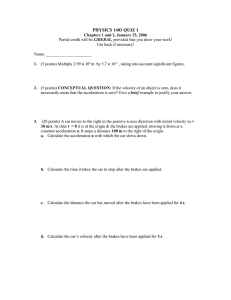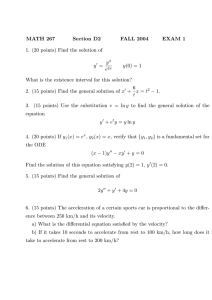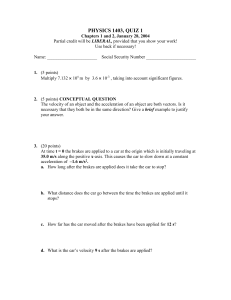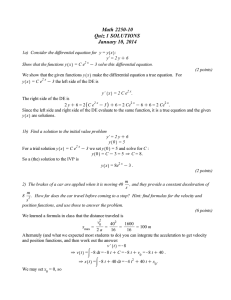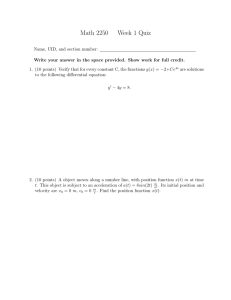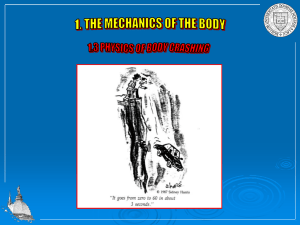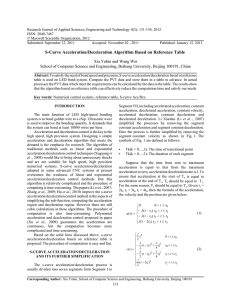Introduction to Differential Equations – Section 3.9 HW Part 1
advertisement
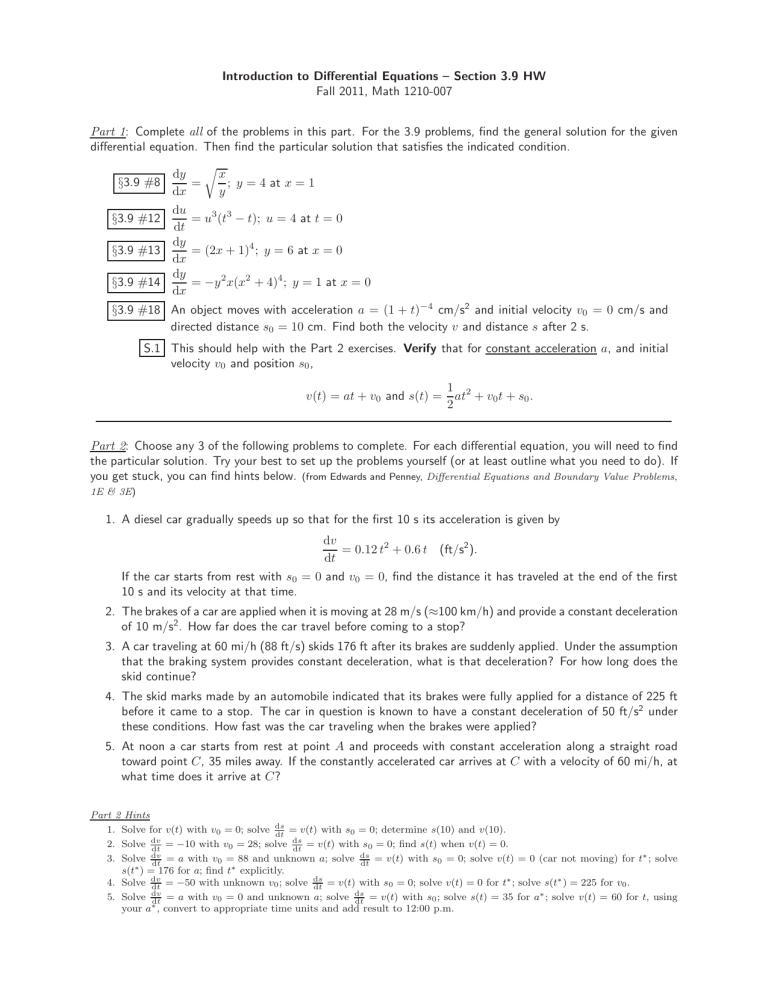
Introduction to Differential Equations – Section 3.9 HW Fall 2011, Math 1210-007 Part 1: Complete all of the problems in this part. For the 3.9 problems, find the general solution for the given differential equation. Then find the particular solution that satisfies the indicated condition. r dy x §3.9 #8 = ; y = 4 at x = 1 dx y du = u3 (t3 − t); u = 4 at t = 0 §3.9 #12 dt dy §3.9 #13 = (2x + 1)4 ; y = 6 at x = 0 dx dy = −y 2 x(x2 + 4)4 ; y = 1 at x = 0 §3.9 #14 dx §3.9 #18 An object moves with acceleration a = (1 + t)−4 cm/s2 and initial velocity v0 = 0 cm/s and directed distance s0 = 10 cm. Find both the velocity v and distance s after 2 s. S.1 This should help with the Part 2 exercises. Verify that for constant acceleration a, and initial velocity v0 and position s0 , v(t) = at + v0 and s(t) = 1 2 at + v0 t + s0 . 2 Part 2: Choose any 3 of the following problems to complete. For each differential equation, you will need to find the particular solution. Try your best to set up the problems yourself (or at least outline what you need to do). If you get stuck, you can find hints below. (from Edwards and Penney, Differential Equations and Boundary Value Problems, 1E & 3E) 1. A diesel car gradually speeds up so that for the first 10 s its acceleration is given by dv = 0.12 t2 + 0.6 t (ft/s2 ). dt If the car starts from rest with s0 = 0 and v0 = 0, find the distance it has traveled at the end of the first 10 s and its velocity at that time. 2. The brakes of a car are applied when it is moving at 28 m/s (≈100 km/h) and provide a constant deceleration of 10 m/s2 . How far does the car travel before coming to a stop? 3. A car traveling at 60 mi/h (88 ft/s) skids 176 ft after its brakes are suddenly applied. Under the assumption that the braking system provides constant deceleration, what is that deceleration? For how long does the skid continue? 4. The skid marks made by an automobile indicated that its brakes were fully applied for a distance of 225 ft before it came to a stop. The car in question is known to have a constant deceleration of 50 ft/s2 under these conditions. How fast was the car traveling when the brakes were applied? 5. At noon a car starts from rest at point A and proceeds with constant acceleration along a straight road toward point C, 35 miles away. If the constantly accelerated car arrives at C with a velocity of 60 mi/h, at what time does it arrive at C? Part 2 Hints 1. Solve for v(t) with v0 = 0; solve ds = v(t) with s0 = 0; determine s(10) and v(10). dt 2. Solve dv = −10 with v0 = 28; solve ds = v(t) with s0 = 0; find s(t) when v(t) = 0. dt dt 3. Solve dv = a with v = 88 and unknown a; solve ds = v(t) with s0 = 0; solve v(t) = 0 (car not moving) for t∗ ; solve 0 dt dt s(t∗ ) = 176 for a; find t∗ explicitly. = −50 with unknown v0 ; solve ds = v(t) with s0 = 0; solve v(t) = 0 for t∗ ; solve s(t∗ ) = 225 for v0 . 4. Solve dv dt dt dv 5. Solve dt = a with v0 = 0 and unknown a; solve ds = v(t) with s0 ; solve s(t) = 35 for a∗ ; solve v(t) = 60 for t, using dt your a∗ , convert to appropriate time units and add result to 12:00 p.m.

